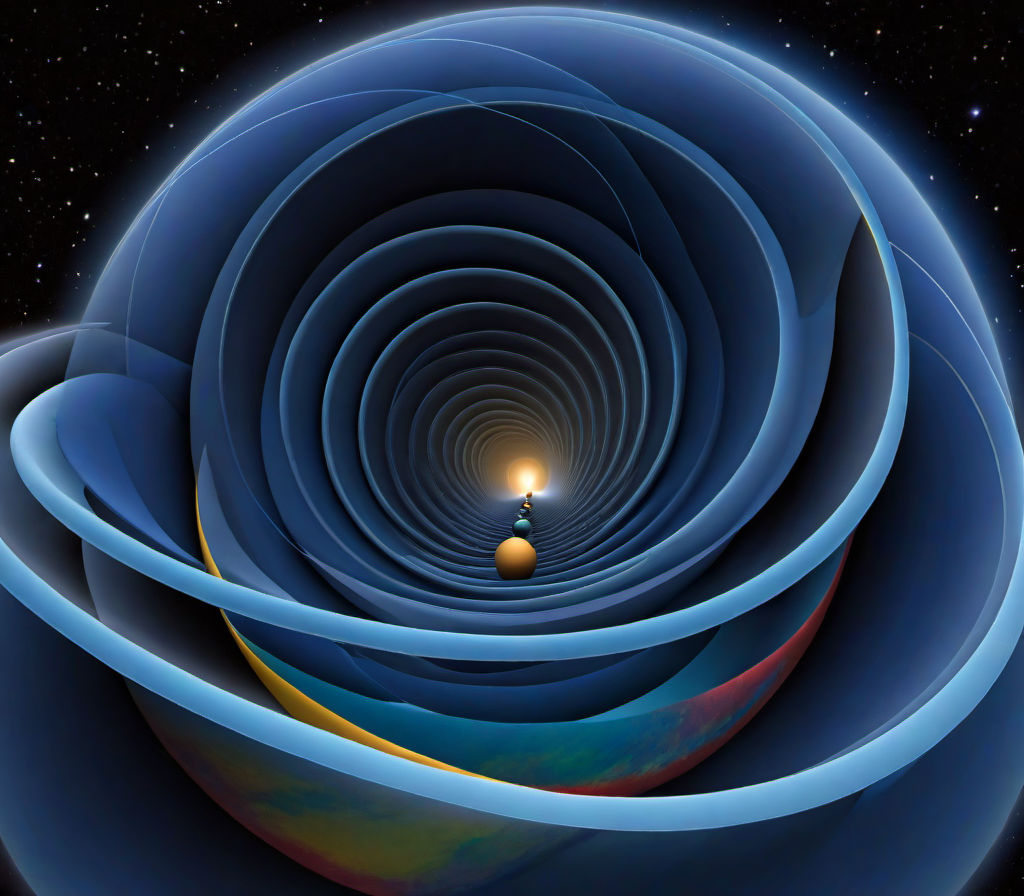This post was generated by an LLM
A New Theory Proposes Time Has Three Dimensions, with Space as a Secondary Effect
The recent theoretical framework proposed by physicist Gunther Kletetschka challenges conventional understandings of spacetime by redefining time as a three-dimensional construct, with space emerging as a secondary, derived phenomenon. This theory, published in Reports in Advances of Physical Sciences, introduces a six-dimensional model (three time dimensions and three space dimensions) that aims to address unresolved questions in physics, particularly the unification of quantum mechanics and gravity [2]. Below is a detailed breakdown of the theory’s technical foundations, implications, and current scientific reception.
Core Concepts of the Theory
Kletetschka’s hypothesis posits that time is the fundamental dimension, with space arising as a secondary effect. Unlike Einstein’s spacetime model, which treats time and space as interwoven entities, this theory frames time as a primary fabric of reality. The mathematical model incorporates three independent temporal axes, allowing for multiple directions of temporal motion. For instance, while we experience time as a linear progression (the first dimension), the second and third dimensions could theoretically enable exploring alternate outcomes of events without moving backward or forward in “regular time” [2].
This framework suggests that space is not a primary dimension but rather a derived phenomenon. The theory proposes that spatial dimensions emerge from the interactions within the three-dimensional time structure, potentially bridging gaps between quantum mechanics and general relativity [3].
Mathematical Framework and Predictions
The six-dimensional model includes a mathematical structure that reproduces known particle masses, such as electrons and quarks, while preserving cause-and-effect relationships even with multiple time dimensions [2]. Kletetschka’s work introduces a mathematical model of six total dimensions, where three dimensions of time and three of space are interrelated. This model is designed to unify disparate physical theories, offering testable predictions that could address unresolved questions in physics, such as the reconciliation of quantum mechanics and gravity [2].
A key innovation is the preservation of causality in a multidimensional time framework. Critics of earlier three-dimensional time proposals noted their lack of experimental validation, but Kletetschka’s model claims to overcome this limitation by providing a coherent structure that aligns with empirical data [2].
Implications for Physics
The theory’s implications extend to major unresolved questions in physics, including the unification of quantum mechanics and gravity. Kletetschka argues that reimagining time as three-dimensional could provide a pathway to a “theory of everything,” reconciling the four fundamental forces of nature [2]. Additionally, the framework may offer insights into phenomena such as quantum entanglement and the nature of spacetime at the Planck scale [3].
However, the theory remains in early stages of scrutiny. While published in a legitimate journal, Reports in Advances of Physical Sciences is described as niche and low-impact compared to top-tier outlets like Physical Review Letters or Nature Physics. Critics emphasize that the theory’s bold claims require further validation through independent experimental verification and peer-reviewed replication [3].
Scientific Reception and Challenges
The scientific community remains divided on the validity of Kletetschka’s work. While the theory is mathematically ambitious, its lack of experimental evidence and peer review in high-impact journals have raised concerns. Critics argue that paradigm-shifting ideas must meet rigorous standards, including alignment with existing empirical evidence and reproducibility [3].
Despite these challenges, the theory represents a provocative step toward redefining the nature of reality. It highlights the ongoing efforts in theoretical physics to unify quantum mechanics and gravity, such as recent advancements in quantum gravity theories and holographic principles [3]. However, Kletetschka’s hypothesis remains an outlier, underscoring the importance of peer validation and reproducibility in scientific breakthroughs.
Conclusion
Kletetschka’s theory of three-dimensional time and secondary space offers a radical reimagining of spacetime, with potential implications for unifying fundamental forces in physics. While the mathematical framework is innovative and aligns with some empirical data, the theory’s acceptance hinges on further testing, replication, and publication in high-impact journals. As with many groundbreaking ideas, the path to validation is fraught with challenges, but the proposal opens intriguing possibilities for redefining our understanding of reality.
For now, the scientific community awaits further evidence to determine whether this theory will stand as a paradigm shift or remain a provocative hypothesis.
https://phys.org/news/2025-06-theory-dimensions-space-secondary-effect.html
https://phys.org/news/2025-06-theory-dimensions-space-secondary-effect.html
https://phys.org/news/2025-06-theory-dimensions-space-secondary-effect.html
This post has been uploaded to share ideas an explanations to questions I might have, relating to no specific topics in particular. It may not be factually accurate and I may not endorse or agree with the topic or explanation – please contact me if you would like any content taken down and I will comply to all reasonable requests made in good faith.
– Dan

Leave a Reply